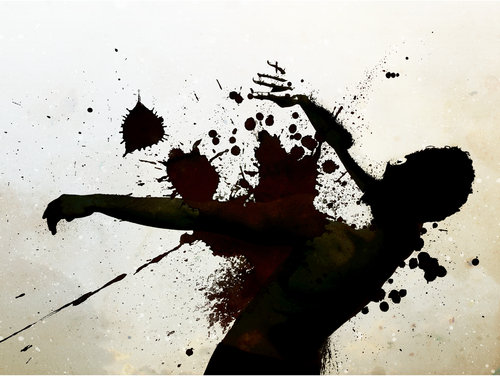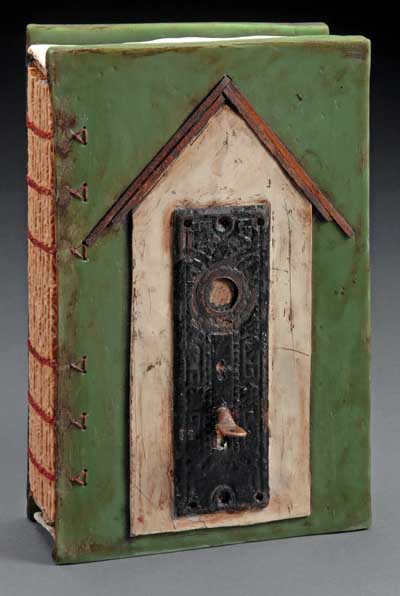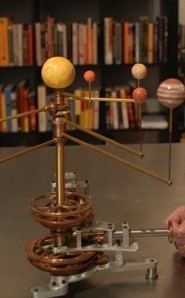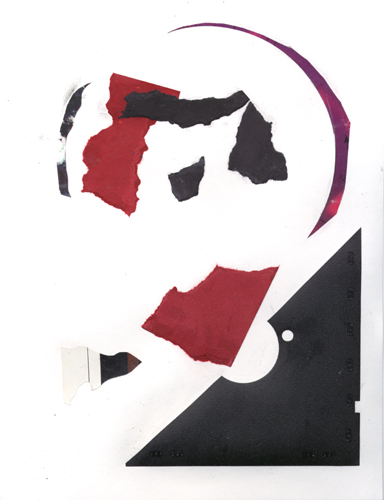Geraldine Newfry makes books/journals using various materials, including polymer clay. Check out her gallery
Category Archives: Art
More stuff from the artist who made the Orrery in the previous post
All sorts of funky coolness, like this computer case:

He, also, shows his process in some of the items in the gallery. Even cooler.
I would love one of these
Mechanical Chic – the Jewelry of Connie Verrusio
Mechanical Chic – the Jewelry of Connie Verrusio
Fascinated by the way things work, Connie Verrusio creates radical new jewelry forms from leftover functions.
Connie Verrucio who uses mechanical “junk” to make fine jewelry. Gears, lugpins, screws, nails, old film–they don’t sound like the subjects of fine jewelry, but that’s just what Connie Verrusio turns them into.

“I am fascinated by all things mechanical,” she says, “and the choices I make reflect a deep reverence for the quality of workmanship, all too often a thing of the past.”

It’s steampunk without the attitude.
New in my Etsy Shop
Ok Men, here’s how to make your wife a great handmade card.

Click for video >> Man Made Card Video
This is great! All you women ‘stampers and scrapbookers out there will love it. This will definitely get you husband into it.
Algae Power

A different approach to powering your home, than my previous nuclear battery one, over at Geoff Manaugh’sBLDGBLOG. Growing algae in balloons, in a way that makes it produce mucho H2. Some beautiful renderings of the project (it’s an urban design project in Iceland), and some commentary from Geoff about how depressing it is that we go to these lengths to, basically, just keep on doing what we’re already doing, instead of trying to change the fundamentals of our society.
Growing algae to produce power is an interesting concept, but really it’s useless without designing communities that use less energy. People just don’t seem to believe in frugality any more, and that’s what we need to return to.
And, no I’m not a hippy, preaching back to the land, and such, because, damnit, I love my tech, and my Schtufff, but with 6 billion people (is that right) on this planet, we really need to figure something out, don’t we?
OF SOUND AND VISION – The Online Portfolio of Alex Cherry
Cool digital art by Alex Cherry
Intolerance

Many of his titles are from songs (including Rage against the Machine, and Radiohead) and interpretations of said songs.
He also has a deviant art page where you can buy prints.
Collage-O-Rama

Check out Simon Redekop’s collages: then check out the rest of his site.
Jasper Johns: Gray
A new show of Johns’ work opens up next month in Chicago. It focuses on the importance of gray in his work, and includes 141 works from 1955 to the present.
There’s a nice article about it here.
From the article:
“I think viewers of this exhibition will be able to experience the great potential and meaning that gray has for Jasper Johns,” said James Rondeau, Frances and Thomas Dittmer Chair of Contemporary Art at the Art Institute of Chicago and co-curator of the exhibition. “Gray is much more than a colour to him. It is an analytical tool, a measure of distance and separation, and a means of getting to the heart of his practice as an artist. Through such a close exploration of a subtle and restricted range, Johns is able to make abundant and commodious discoveries….”


